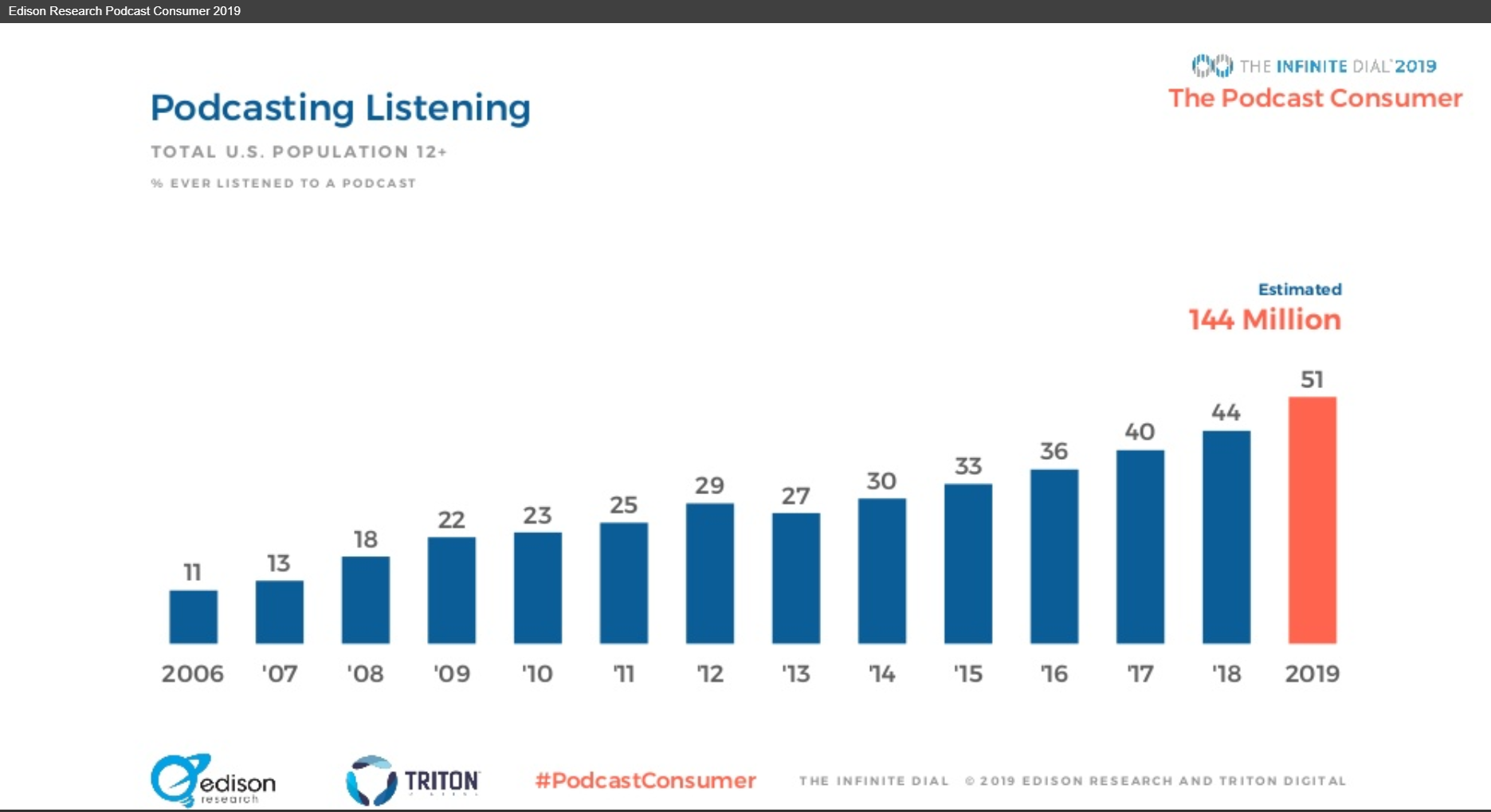The first time I heard the MailChimp ad at the beginning of the hit podcast Serial, which told the story of a teenaged Adnan Sayed’s 2001 murder conviction, I barely registered it. I had a vague idea of MailChimp but had never actually used it.
By episode three, I’d come to enjoy the clever ad, which featured a multitude of voice talking about the product. By episode six, I’d memorized it. And by the end of the series, I realized I was going to miss my weekly MailChimp advertisement. I wasn’t the only one.
As conversation around Serial grew, so did notice of that MailChimp ad. The press wrote about it; my friends talked about it on social media. People parodied it on Twitter.
At a time when most consumers are exposed to hundreds, if not thousands, of ads whether they’re watching TV, driving to work, or checking their social media, we’ve mostly learned to tune out much of the messaging we’re exposed to.
But podcasts ads are different. They’re more like advertisements from the Golden Age of Radio, when a trusted host might gently encourage you to have a glass of Ovaltine, and you would because the host/listener relationship was built on trust, and those endorsements were good as gold.
Listeners love podcasts — around 144 million consumers are tuning in
Studies show that, in terms of trust, the podcast era is approaching the same level of intimacy as the Golden Age of Radio. Popular podcast hosts are very niche celebrities, but their fans are incredibly devoted. I recently attended a live taping of the podcast The Dollop. The taping sold out The Palace theater in downtown L.A. Hundreds of nerds (including me) sat rapt in our seats listening to the history of salt.
According to Edison Research, around 144 million consumers are listening to podcasts in 2019.
32% of Americans had listened to a podcast in the last month, with 22% listening in the last week.
That number is a huge jump from previous years — and a 122% jump since 2014.
But just because listeners are tuning in to podcasts doesn’t necessarily mean they’re tuning in to advertising. Or does it?
Listeners seem to not mind podcast ads as much — they earn 4.4x better recall than common digital ads
My fond memories of the MailChimp ad are purely anecdotal, but it seems that I’m not alone in my affinity to podcast advertising. A recent study by Midroll in conjunction with Neilsen found that listeners remember podcast advertising much better than they remember other forms of native ads. The study found that podcasts earned 4.4 times better recall than display ads, such as scroll ads, static ads and pop-up ads, on other digital media platforms.
And though Serial did not make me a MailChimp user, I’m pretty likely to make a purchase based on hearing a brand talked up on one of the many other podcasts I listen to. The Midroll study also found a “10 percent lift in purchase intent among listeners exposed to a podcast ad. Sixty-one percent said they were likely to buy, compared to 56 percent of listeners who did not hear an ad.” I definitely googled “MeUndies” after hearing about them on My Brother, My Brother, and Me but ultimately decided they weren’t my style.
So since audiences love podcasts and are open to advertising while they’re listening, what’s stopping brands from going all in on podcast advertising.
How soon will podcast advertising become mainstream?
Well, unlike digital marketing where there are myriad metrics for discovering how messaging is being received, or TV and radio, which have pretty clear rating systems in place, it’s still early days for podcasts. The most effective measurement tool available is downloads, and it’s hard to be sure if the listener actually heard the message.
But the good news is all that is changing. According to MediaVillage, this summer Neilsen has plans to launch the Podcast Listener Buying Power product, which will combine consumer data with podcast listening insights to help advertisers determine the impact of their messaging.
And NPR, which brought us Serial, also recently released a tool to help advertisers. Remote Audience Data provides download insights alongside information about how much of the podcast listeners actually played as well as which content got skipped.
Just like it’s probably a mistake to assume any video your brand launches will go “Baby Shark” level viral, it’s also a mistake to create podcast ads that get written up in The Atlantic.
However, the podcast space is relatively uncrowded right now, and for advertisers who can find unique ways to tie their brand to a particular podcast, the field is wide open to connect with largely untapped audiences.
The post The rise of podcast advertising: 32% of Americans are tuning in appeared first on ClickZ.
